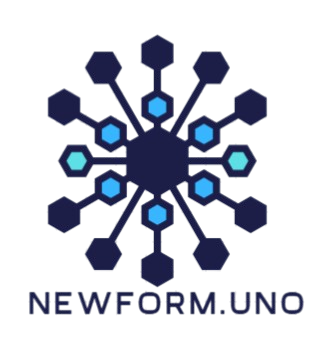The Decision to Change Careers
Making the decision to change careers is often a pivotal moment in one’s life, marked by multifaceted motivations and deep introspection. For many individuals, including myself, job dissatisfaction serves as a primary catalyst for considering a shift in profession. The routine of daily tasks began to feel monotonous, prompting reflections on my true passions and aspirations. This growing discontent highlighted a pressing need to realign my career with my values and interests.
In addition to job dissatisfaction, the desire for personal and professional growth played a significant role in my decision-making process. As I engaged in self-assessment, I recognized the importance of continuous learning and advancement. This realization fueled my ambition to explore opportunities that offered not just a paycheck but also the potential for development and fulfillment. Moreover, the pursuit of work-life balance became increasingly essential, especially in today’s fast-paced environment. I sought a path that would facilitate a healthier equilibrium between career responsibilities and personal lives, allowing me to thrive holistically.
However, the journey towards a new profession is rarely devoid of apprehensions. I encountered fears surrounding financial stability and the uncertainty of stepping into the uncharted territory of a different career. Despite these hesitations, excitement surged within me at the thought of new possibilities and the potential for transformative experiences. These dual emotions—fear and excitement—coexisted as I navigated my choice, reminding me that change is often a complex yet rewarding process.
Ultimately, the decision to change careers emerged from a confluence of factors, driven by dissatisfaction, growth aspirations, and the need for balance. Each consideration highlighted the importance of pursuing a path aligned with my core values, setting the stage for an enlightening journey ahead.
Choosing the Right Training Program
Embarking on a new professional journey requires careful consideration in selecting a training program that adequately aligns with one’s career aspirations. When evaluating various options, it is essential to assess the curriculum relevance to ensure that the courses offered meet the demands of the intended industry. A program that incorporates contemporary topics and skills pertinent to the marketplace is likely to be beneficial for career advancement.
The reputation of the institution providing the training also plays a significant role in ensuring a valuable learning experience. Established programs with positive reviews and a history of successful graduates can offer a level of assurance regarding the quality of education provided. Potential students should research institutional rankings, accreditation, and testimonials to gain insight into the efficacy of the program.
Accessibility to online resources is another crucial aspect to consider when choosing a training program. In today’s digital landscape, programs that offer online learning platforms, webinars, and supplementary materials allow for flexible learning. This is particularly important for those who may be balancing other commitments alongside their studies. Ensuring that the program provides support in the form of accessible materials can greatly enhance the learning experience.
Furthermore, evaluating instructor expertise is vital. Researching the qualifications and experience of instructors can provide a glimpse into the quality of mentorship available. Engaging with knowledgeable and experienced professionals can maximize learning opportunities and foster professional networks.
Finally, prospective students should align their chosen program with their personal learning styles and consider future job market trends. By understanding their preferred methods of learning – whether visual, auditory, or kinesthetic – individuals can select programs that cater to their strengths. Additionally, analyzing trends within the job market can aid in identifying skills and knowledge that will be in high demand, ultimately steering individuals towards a successful career path.
Intensive Learning and Practical Application
The journey towards changing careers demands a significant commitment to learning and development, often characterized by intensive educational experiences. As I embarked on this transformative path, I was immersed in a variety of courses that equipped me with essential hard skills required for my new profession. These included technical competencies such as data analysis, project management, and software proficiency tailored to my field of interest. The structured learning environment not only fostered knowledge acquisition but also targeted the practical application of skills in real-world scenarios.
In parallel with hard skills, I also focused on enhancing various soft skills such as communication, teamwork, and adaptability. The importance of these skills became evident as I participated in collaborative projects and group discussions, allowing me to interact with peers from diverse backgrounds. Such experiences broadened my perspective and honed my ability to thrive in a dynamically changing work environment. Recognizing the significance of effective collaboration, I made it a priority to engage actively in team activities, contributing ideas and supporting colleagues to achieve common objectives.
Hands-on projects significantly solidified my learning experience. By applying theoretical concepts to practical situations, I was able to comprehend the nuances of my chosen profession. For example, one project involved developing a comprehensive strategy for a mock client, requiring me to synthesize market research, data interpretation, and creative problem-solving skills. This not only reinforced my technical capabilities but also provided a platform for demonstrating my creativity and critical thinking. These real-world applications of knowledge served as a bridge between theory and practice, ultimately preparing me for the challenges that lie ahead in my career transition.
Navigating the Transition into the Workforce
Transitioning into a new job role can be both a daunting and rewarding experience. The job search process serves as the foundation for a successful career shift, requiring meticulous attention to various aspects, including resume crafting, interview preparation, and effective networking strategies. Tailoring your resume to emphasize relevant skills and experiences for the new industry is crucial. Focus on highlighting transferable skills and any related projects that showcase your abilities, as this will help potential employers see your value in the new context.
Interview preparation is equally vital. Researching the organization and understanding its culture, values, and industry dynamics can significantly enhance your confidence and performance during interviews. Practicing common interview questions, as well as formulating insightful queries about the role and company, will demonstrate your preparedness and genuine interest in the position. Additionally, seeking feedback from career coaches or mentors can provide valuable insights into refining your approach.
Networking plays a pivotal role in securing opportunities within a new field. Engaging with industry professionals through platforms like LinkedIn or attending relevant seminars and workshops can open doors that lead to job leads and mentorship. Establishing a personal brand that resonates with your target industry is essential for building lasting professional relationships, thereby increasing the chances of finding job matches that align with your skills.
Upon entering the workplace, adapting to a new environment and leveraging your acquired skills can present challenges. Maintaining a growth mindset is beneficial in navigating these initial experiences. Seek regular feedback from colleagues and supervisors to identify areas of strength and opportunities for development. Embracing continuous professional development through courses, certifications, or workshops will further enrich your expertise and ensure you remain relevant in an ever-evolving landscape.


No responses yet